How 3D games appeared on Super Nintendo: the history of the Super FX coprocessor

The beginning of the 90s is the time of the wars of the fourth generation consoles . The main competitors for the market and the wallets of fans of games have become Nintendo and Sega with the prefixes Super NES (Super Famicom) and Sega Mega Drive (Genesis). Both companies tried to attract players with spectacular special effects, but the computing power of the consoles was limited. They are physically unable to independently provide the calculation of three-dimensional graphics.
However, the solution was found, and it consisted in the very concept of cartridges, which were not only drives with games, but could also be used as expansion cards. In March 1993, the first SNES cartridge with the Starfox space simulator appeared. Inside it was installed Super FX co-processor, which provided a long-awaited breakthrough in 3D. The development of the coprocessor Nintendo commissioned the British game developer Argonaut Software. What is this company, and how did it cross paths with Nintendo? To answer this question, you need to go back another ten years ago.
Brief history of the Argonauts

Jeremy sen
')
In 1982, the 16-year-old British hacker Jeremy "Jez" San (Jeremy "Jez" San) founded his company Argonaut Software, providing large corporations with consulting services in the field of IT-security. The company name appeared from a pun: J.San is pronounced very much like Jason (Jason), and where Jason is, there are Argonauts. Jeremy was a prodigy, at 13 he learned the assembly language of several computer architectures. Later, he used this knowledge to eliminate holes in the security of commercial computer systems.
A little later, Jeremy and his friend Fouad "Fu" Katan (Fouad "Foo" Katan) started developing games, and in 1984 released the horizontal shoot'em-up Skyline Attack for Commodore 64, but real fame came to them after the release of Starglider . It was a three-dimensional space-borne FPS for 16-bit Commodore Amiga and Atari ST computers. It is considered the first popular 3D game, it was ported to other platforms and sold several hundred thousand copies.
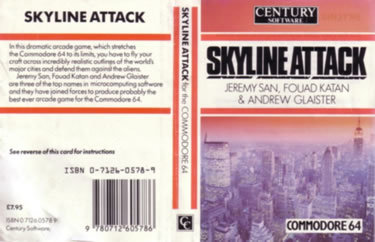
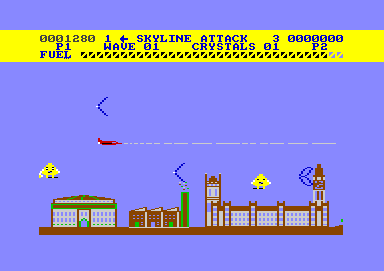
Skyline attack


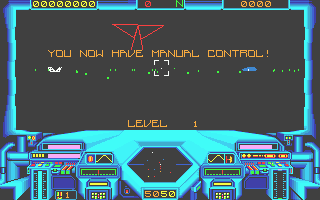
Starglider
In 1988, the "Argonauts" released the second part of Starglider . At the same time, 16-year-old developer Dylan Cuthbert joined the company. A year later, Nintendo released the Japanese version of the first 8-bit portable console GameBoy. Jeremy Sen was interested in the console, he ordered it from Japan and created an experimental development kit for it. While the GameBoy was still inaccessible to the rest of the world, with the help of this kit Cuthbert managed to squeeze the maximum out of his meager resources and write a demo of a vector 3D engine !

Dylan Cuthbert
The word “vector”, and not “polygonal” was not used in vain - the engine could only draw segments connecting points, but not paint over polygons. All objects in the demo consisted of translucent through "wire" (wireframe) frames.

1980 Battlezone game with vector wireframe graphics
Jez proudly demonstrated the demo at the Consumer Electronic Show. Most of all they were shocked by the representatives of Nintendo.
Dylan Cuthbert recalls:
“Nintendo realized that no one before us had tried to implement 3D on the GameBoy, no one even thought it was possible, and Nintendo itself in particular. They thought it was just a 2D system and it was not meant for anything else. ”Two weeks later, the “Argonauts” were invited to the company's Japanese office and offered to use their technology in future Nintendo products. This time, they showed the 3D engine to the entire management, and Shigeru Miyamoto himself blessed Dylan to work together with Metroid series director Yoshio Sakamoto on the full version of the engine.
In 1992, work on the project was completed, and the announcement of the game under the short title “X” was already posted in Nintendo Power’s own magazine. However, Nintendo suddenly changed plans and refused to distribute the game on the world market, limiting itself to Japan. So the first 3D shooter for the GameBoy did not become a world classic.

Graph X clearly shows the influence of Starglider.
Argonaut's biggest success was still Starglider . And in order to raise the bar, advanced software techniques were not enough for them ...
Let us return to the first meeting of Argonaut with Miyamoto and representatives of Nintendo in Japan. On it, Jeremy showed another example of the game, created on the basis of Starglider and intended to work on the NES (he had the corresponding name NESglider ). In turn, Nintendo decided that the time had come to acquaint Jez and Dylan with the company's newest project: a very rough prototype of the then-unknown Super Famicom system with an early version of the game Pilotwings . The management stated that this is the first attempt by Nintendo to implement 3D in the future console, which can greatly benefit from the use of knowledge of young programmers.

Super Famicom prototype
Super FX Development
The next step for Argonaut was the work on porting the NESglider demo to an unfinished prototype of the Miyamoto console. Years later, Jez told an interview:
“I told them that it would be much better if they let us develop the equipment so that SNES would feel confident in 3D. Surprisingly, despite my lack of experience, they agreed and gave me a million dollars to implement. ”Argonaut Software hired a team of experienced chip developers from Cambridge to create the world's first 3D accelerator based on one of the first RISC processors.
"We were the first in the 3D acceleration market that NVidia and ATI have now shared ... and we have patents proving this."The Super Famicom prototype was poorly documented, so for a more complete integration of the chip with 16-bit hardware and improving the performance of the entire system, it was necessary to perform reverse engineering. The “Argonauts” succeeded, but they had to put up with putting the coprocessor in the game cartridge (this increased the cost of the cartridges, and not the console itself). The result was the chip "MARIO" ("Mathematical, Argonaut, Rotation & Input / Output"), later renamed Nintendo as "Super FX".
"It was not just a graphics chip, but a microprocessor designed for working with graphics software, but it also performed other functions (for example, fast mathematical calculations)."
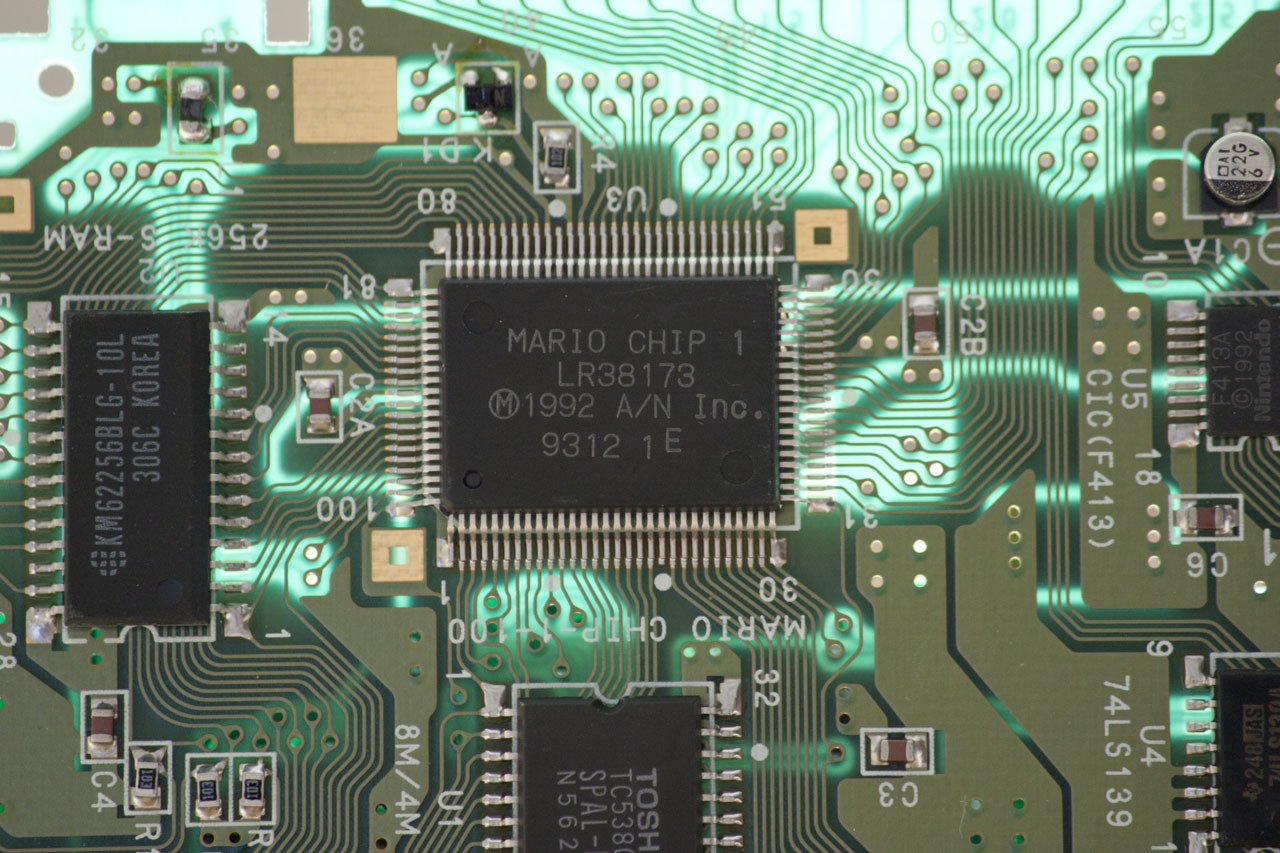
The first version of the Argonaut graphics accelerator with preserved MARIO CHIP 1 marking.
The final processor version used in Starfox, Stunt Race FX, Vortex and Dirt Trax FX
By itself, Super NES had limited mathematical capabilities, with the exception of the famous Mode 7, which could only scale and rotate a single 2D background. Moreover, the SNES CPU did not even contain the multiplication command!
Processor specifications are listed in Appendix A.
The first game with a graphics accelerator
Dylan's work on X coincided with the development of Super FX (around 1990-1992). In 1992, both projects were almost simultaneously completed. After the release of the only monochrome game Argonaut in Japan, Dylan joined Giles Goddard and Krister Wombell in a new joint project of Argonaut and Nintendo: creating the first game using the newly developed 3D accelerator.

American cover of the game Starfox
The now famous Nintendo game series called Starfox began as Starglider 3 , a continuation of the popular space shooter with Amiga. Therefore, Argonaut again used the theme of interstellar hostilities, so beloved by it. The task of Nintendo this time was to work on a more "arcade" style of play, easier compared to simulator X.
Creating cute characters and a simple script was only half the job. They also had to simplify management and move from free flights, typical of previous Argonaut games, to a more user-friendly “rail” arcade gameplay inspired by Namco’s Starblade and Solvalou games. Such changes upset some Argonaut fans (Dylan himself wanted the Starfox levels not to be linear), but, as we know, the gameplay of the final product was close to the ideal.
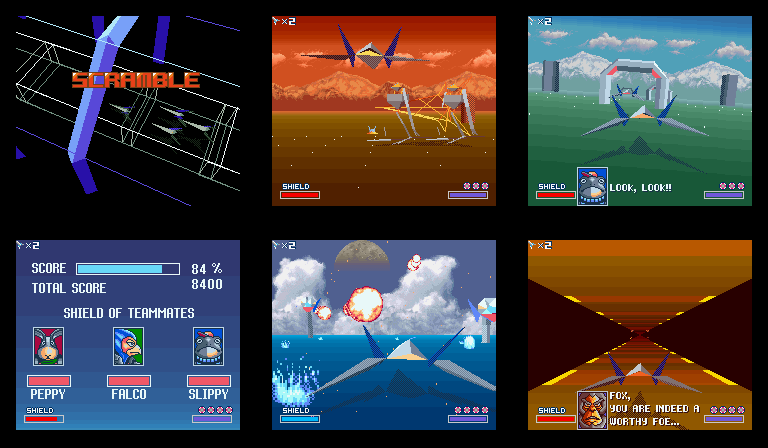
Starfox
The plot of the game is the struggle of the elite squad of mercenaries Starfox (consisting of Falco hawk, Peppy rabbit, Slippy toads and Fox team leader Fox) against the sinister scientist Andross. The Fox team must protect the home planet of Corneria and the rest of the Lylat system with their spacecraft (Arwing), launching a counterattack and following one of three routes to choose from in order to reach the source of evil - the planet Venom. Each route (called a level in the game) is distinguished by complexity and stages. It passes through various planets of the system, fields of asteroids, sectors in deep space, and even a mysterious black hole and hidden alternative dimension.
As already mentioned, the freedom of movement available in Starglider and X was not transferred to Starfox . Instead, the player’s Arwing automatically follows a predetermined path at each of the stages, shooting off enemies and dodging obstacles, and then reaches the end of the stage and the boss. It seems that it greatly reduced the player's ability compared to previous games Argonaut, but the 3D-engine still leaves enough ways to dodge and move. The camera then follows it up, down and sideways.
The game begins with a full line of energy and three lives. The player's ship is equipped with an improved main laser, a limited number of bombs that destroy all enemies on the screen, can make a “barrel” to avoid shots, and accelerate for a few seconds to fly through gates and bottlenecks.
Enemies are represented not only by a typical assortment of space operas in the form of small fighters and huge cruisers, there are also overgrown insects, dragons, water snakes and support robots. The most impressive, of course, were the giant bosses of the end of the level, the victory over which requires quick reflexes and tactics.
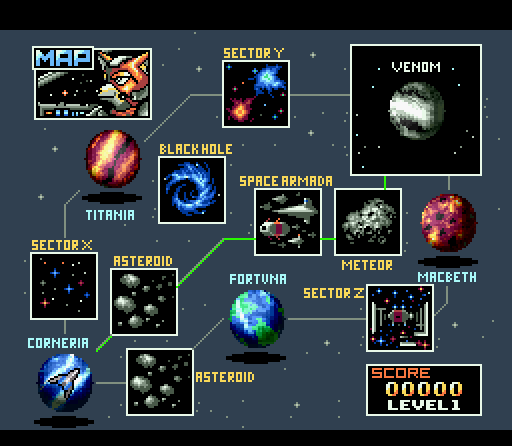
Starfox Level Map
The stages are more unique than in the usual games of the shoot'em-up genre, in some of them you can even choose up to three camera views (the most interesting is right inside the Arwing cockpit). Starfox gameplay consists of a constantly changing balance between master control and fast shooting. The player is busy penetrating enemy tunnels, dodging asteroids and safely passing through the space station of the enemy, at the same time trying to shoot as many enemies as possible.
The player passes the game not alone. Probably the best of Nintendo’s Starfox ideas is the addition of three Fox mates, who constantly defend the “rear” of his Arwing and follow the player in close order of battle. They communicate with stupid, distorted voice samples (players laughed most about this detail), and can even flee by asking Fox for help when their lines of energy are reduced when attacking enemies. Such interaction with the team, even a very limited one, greatly increased the sense of belonging to the squad, forcing the player to take care of teammates. If they left the battlefield, the player immediately noticed a lack of fire support.
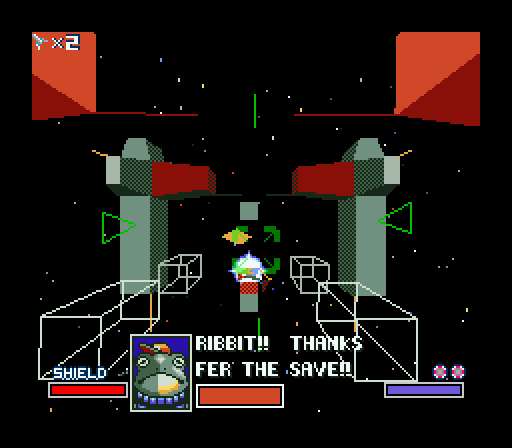
Slippy thanks the player for help.
The modest capabilities of the 10.5 MHz Super FX chip were impressive at the time, although they didn’t meet modern standards. The most noticeable disadvantage was the incredibly “ragged” frame rate (in emulators it is not so obvious) and the low resolution of the output of video with a black frame around the screen (Super FX could draw no more than 192 lines in height). Fortunately, these problems did not seriously affect the gameplay.
Interestingly, the Starfox world did not consist of polygons alone. The backgrounds were beautiful still and animated images, and the Super FX processor not only computed vectors, but also scaled and rotated 2D sprites, such as circular lasers, asteroids, and Andross, the final form of the boss.
The success of Starfox is the result of an excellent balance between Argonaut's innovative technology and attentive work with Nintendo details. Destructive Arwing wings, interchangeable cameras and a short Scramble intro, which has become a classic - the result of Argonaut; game design, simplified management, teamwork and excellent soundtrack are Nintendo’s merit.

Life after Starfox
After the huge success of Starfox, Dylan began working on his follow-up for SNES. Starfox 2 was already in a state of the final beta, but Nintendo decided to completely abandon it in favor of the improved 3D capabilities of the new N64. After that, Cuthbert left Argonaut for Sony Computer Entertainment America, where he worked on the development of the Blasto game for the Playstation. A few years later, he was transferred to Sony's Tokyo office, developed Ape Escape, and left the company in 2001, setting up his own Q-Games development studio. He continues to live in Japan, his company has created various projects for the Nintendo DS, Playstation 3 and Playstation 4.
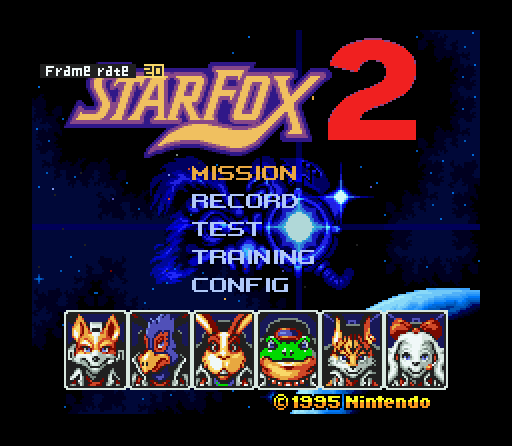
Starfox 2 Unreleased Title Screen
The success of Starfox and the Super FX chip led to the expansion of Argonaut. Jez and his team developed processors for other game consoles: GreenPiece Philips, Apple's VeggieMagic and MatriArc Hasbro; none of them has been released. The dismayed Argonaut team finally created its own microprocessor (“Argonaut RISC Core”) and sold its design with non-exclusive rights.
In 2002, Jez received the Order of the British Empire, which was first awarded for achievements in the computer games industry. Unfortunately, after two years, Argonaut Software Ltd was liquidated due to significant losses. Jez is now president of the online poker company he founded in 2005.
Appendix A: Details on the Super FX Processor
The hardware design of the chip involved the British company Ben Cheese Electronic Design .
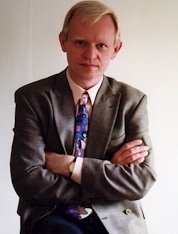
Ben Cheese, Super FX Developer
The first version of Super FX (GSU-1) had a frequency of 21.477 MHz, but the internal clock divider reduced it to 10.74 MHz. The processor had 100 contacts. Super FX 2 (GSU-2), operated at a full frequency of 21.477 MHz, it had 112 contacts and it had access to a larger volume of SRAM.
Game cartridges with Super FX chips have additional contacts that are connected to additional contacts in the cartridge connector, which are not usually used. Cartridge adapters, such as Game Genie , did not have connections to these previously unused contacts, so games with Super FX could not be used in such devices.
In addition to rendering polygons, the chip was often used to help SNES / Super Famicom with complex 2D effects.
For game developers, the chip cost 10 dollars.
| Super FX (GSU-1) | Super FX 2 (GSU-2) | |
|---|---|---|
| Frequency | 10.74 MHz | 21.477 MHz |
| Number of contacts | 100 | 112 |
| Sram | 32 KB | 64 KB (supports up to 128 KB) |
Appendix B: Games Using Super FX
| Super FX (GSU-1) | |
|---|---|
| StarFox (8 Mbps ROM, 1993, Nintendo / Argonaut) | 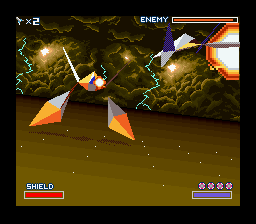 |
| Super StarFox Weekend (8 Mbps, 1993, Nintendo / Argonaut) |  |
| Stunt Race FX (8 Mbps, Nintendo / Argonaut) |  |
| Vortex (4 Mbit, Electrobrain / Argonaut) | 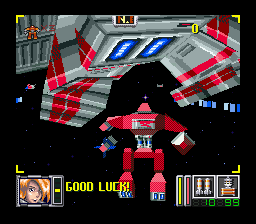 |
| Dirt Racer (4 Mbit, 1995, Elite Systems / MotiveTime) | 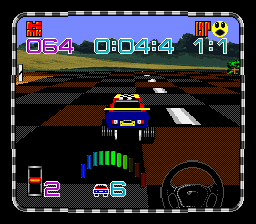 |
| Dirt Trax FX (4 Mbit, 1995, Acclaim / Sculptured Software) | 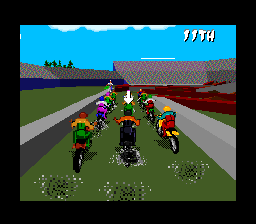 |
| Super FX 2 (GSU-2) | |
| DOOM (16 Mbps, 1995, Williams) | 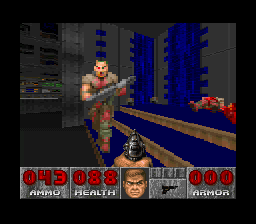 |
| Winter Gold (16 Mbps, 1996, Nintendo / Funcom) | 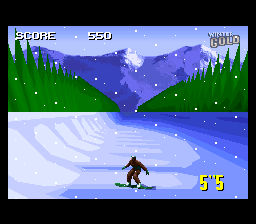 |
| Super Mario World 2: Yoshi's Island (16 Mbps, 1995, Nintendo) | 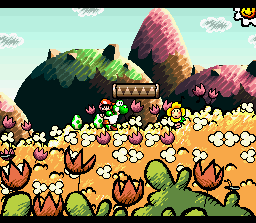 |
Source: https://habr.com/ru/post/397955/
All Articles